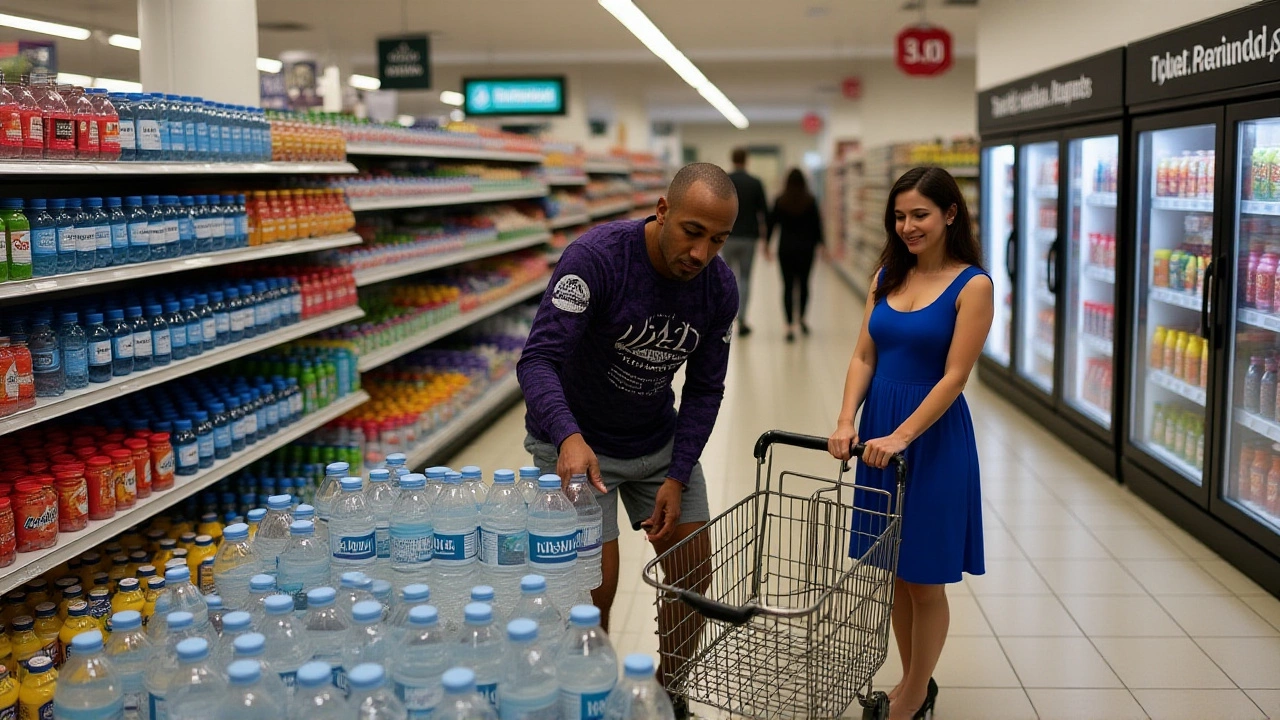Food prices in the UK are climbing at their slowest rate in nearly five years — a small but meaningful reprieve for households still reeling from the worst inflation spike in decades. In September 2025, year-on-year food inflation dipped to 4.50%, down from 5.10% in August, according to Office for National Statistics data analyzed by Trading Economics. It’s the ninth straight month of decline, and the first time the annual rise has hovered below 5% since early 2021. But behind this encouraging number lies a warning: supermarkets are running out of room to absorb costs, and if the government adds more taxes in the November 2025 Budget, prices could surge again.
Why this slowdown matters — and why it might not last
The drop in food inflation feels like a breath of fresh air. After hitting a record high of 19.10% in March 2023, when supply chains snapped under pandemic pressure and energy prices spiked, the steady decline since then has brought some relief. But even at 4.5%, food inflation is still nearly 50% above the 2.98% average recorded between 1989 and 2025. For families budgeting tightly, every penny counts. A typical household now spends £230 more per year on groceries than it did in 2020 — and that’s before any new taxes kick in.The British Retail Consortium (BRC), which speaks for the country’s biggest supermarket chains, says the progress is fragile. "Consumers benefit from some of the lowest food prices in the developed world," said Helen Dickinson OBE, Chief Executive of the British Retail Consortium. "But our ability to absorb additional costs is diminishing. If the industry faces higher taxes — like a surtax on business rates — households will feel it first and hardest."
The hidden tax burden crushing retailers
It’s not just global supply chains or bad weather driving prices up anymore. The real pressure is coming from home. The last Budget, delivered in March 2025, slapped over £7 billion in new costs onto retailers. That includes higher employer National Insurance Contributions, a new Extended Producer Responsibility (EPR) tax on packaging, and a 10% rise in the business rates multiplier. These aren’t abstract policy tweaks — they’re direct hits to the bottom line of businesses already operating on razor-thin margins.The grocery sector employs nearly one million people across the UK. Yet, as the BRC points out, profit margins average just 1.5% — far below manufacturing, tech, or even hospitality. Supermarkets compete fiercely on price. That’s why they can’t simply pass every cost increase to customers. But they’re running out of options.
Here’s the kicker: large retail stores — the Tescos, Sainsbury’s, Asdas, and Morrisons that dominate headlines — make up barely 5% of all UK food stores. Yet they pay one-third of the entire £21 billion annual business rates bill. "It’s like taxing the biggest houses in a neighborhood to pay for street lighting," said one anonymous retail finance director. "The small corner shops pay less than £1,000 a year. The big ones? £250,000. And now they’re being asked to pay more? It’s unsustainable."

Who’s calling the shots — and what’s next
The BRC isn’t just complaining. It’s lobbying. With the November 2025 Budget Westminster just weeks away, the consortium is urging Chancellor Rachel Reeves MP to pause or reverse the most damaging measures. Tesco PLC, headquartered in Welwyn Garden City, Hertfordshire, Sainsbury’s in Holborn, London, Asda in Leeds, West Yorkshire, and Morrisons in Bradford, West Yorkshire — all have quietly aligned behind this message.The Bank of England has already flagged the issue. In its latest inflation report, it noted that "the current inflationary pressures are being exacerbated by the increased tax and cumulative regulatory burden faced by retailers and their supply chains." That’s unusual language for a central bank — it’s a direct call for fiscal restraint.
Meanwhile, projections from Trading Economics suggest food inflation will fall to 4.3% by December 2025, then dip to 3.0% in 2026 and 2.1% in 2027. That’s close to the historical norm. But those numbers assume no new taxes. If the Chancellor adds a business rates surcharge — as some Treasury insiders suggest — the trend could reverse.

The bigger picture: inflation isn’t gone — just hiding
The IMF expects the UK to have the highest inflation rate in the G7 through 2026. That’s not just about food. It’s about energy, housing, and now, retail taxes. What’s happening in the supermarket aisle is a microcosm of a broader economic tension: how do you reduce inflation without crushing the very businesses that keep essentials affordable?Historically, the UK has weathered food price shocks — from the 1970s oil crisis to the 2008 commodity spike. But this time, the problem isn’t just global. It’s domestic policy. And the people who pay the price aren’t CEOs or investors. They’re the single parent choosing between milk and medicine. The pensioner skipping meals to stretch their pension. The student working two jobs just to afford groceries.
There’s a quiet crisis unfolding. The numbers are improving. But the system is still broken.
Frequently Asked Questions
Why is food inflation still high even though prices are rising slower?
Slower inflation means prices aren’t rising as quickly — not that they’re falling. In September 2025, groceries still cost 4.5% more than a year earlier. That’s down from 19.1% in 2023, but still far above the 2.98% historical average since 1989. Households are paying more overall, just not as much more each month.
How do business rates affect food prices?
Business rates are property taxes paid by retailers. Large supermarkets pay up to £250,000 annually — one-third of the UK’s total £21 billion bill. When these taxes rise, retailers can’t easily raise prices without losing customers. So they absorb costs until they can’t — then they raise prices, cut staff, or reduce product quality. All three hurt consumers.
What’s the impact of the £7 billion in new taxes on retailers?
The March 2025 Budget added over £7 billion in costs through higher National Insurance, packaging taxes, and business rates. With grocery margins averaging just 1.5%, even £100 million in extra costs forces price hikes. The BRC estimates that without these taxes, food inflation would be nearly 1.5 percentage points lower today.
Could food prices drop below 2% in 2026?
Yes — if no new taxes are introduced. Trading Economics projects food inflation will fall to 3.0% in 2026 and 2.1% in 2027, nearing the 2.98% historical average. But that assumes stability. Any new levy — especially on business rates or energy — could push inflation back above 4% for months.
Why is the UK’s inflation higher than other G7 countries?
The IMF cites three main reasons: higher energy dependency, a weaker pound, and more aggressive domestic taxation on retail and services. While Germany and Canada cut business taxes to ease inflation, the UK added £7 billion in new costs. That’s not just policy — it’s inflation fuel.
What can households do while waiting for policy changes?
Switching to own-brand goods, buying in bulk, and using loyalty programs can save 15–20% on groceries. The BRC says supermarkets have never offered more value — but households need to shop smarter. Food banks and community fridges remain vital safety nets, especially in areas where wages haven’t kept pace with inflation.
